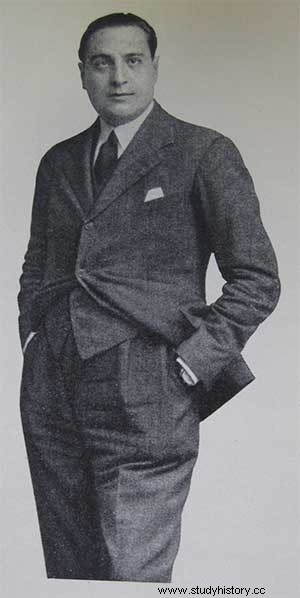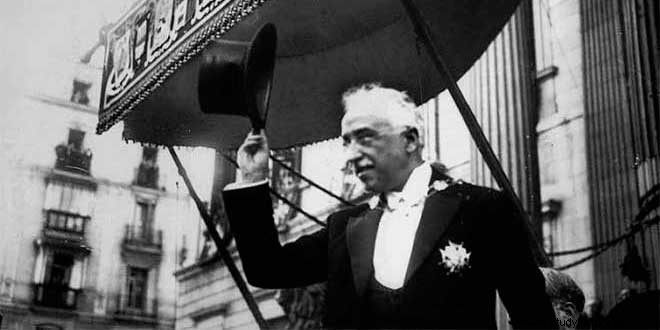After the festive arrival of the new regime, a Provisional Government was formed, made up of conservative republicans such as its president, Alcalá-Zamora, centrists, such as Lerroux (Minister of State), or leftists, such as Azaña (Minister of War), even socialists like Francisco Largo Caballero (Work), Indalecio Prieto (Hacienda) and Fernando de los Ríos (Justice). His project, ambitious and transformative, expressed the day after the proclamation of the new Republic in a public document, will first have to control the republican forces themselves who, encouraged by change, intend to take their own path:the unilateral proclamation of a Catalan State by Maciá in Barcelona or the burning of convents at the hands of uncontrolled anticlericals do nothing to help consolidate a young system with many enemies.
Government Thoughts
Undoubtedly, the intentions of the members of the Government are different and diverse. For the former, the moderate Republicans, the new regime should limit itself to articulating a liberal democracy that renews the corrupt political dynamics of the monarchy but without going further in modifying the social structure. For leftist republicans, for their part, a radical cultural transformation is essential to rid the country of illiteracy, superstition and backwardness in order to lay the foundations for an effective modernization that must go through the construction of a secular state , separated from the pernicious influence of the Church, liberal and democratic in its deepest sense. For the socialists, within whose party quite different currents coexist, the shared objective is to create a political framework that allows progress towards a future socialist system (either through a liberal democratic system or through the dictatorship of the proletariat) and, in the short term, correct the imbalances and inequalities that affect the most disadvantaged classes. Despite the fundamental agreement, tensions do not take long to arise.

Elections to Constituent Courts
In the first place, the creation of a constitutional framework is addressed, for which elections to the Constituent Courts are immediately called, which are held, amidst the greatest expectation, on June 28, 1931. The result is mostly favorable to the candidates made up of leftist republicans and socialists , obtaining the PSOE, the only party with an organization worthy of such a name in the whole territory, a total of 114 deputies (including some outstanding university professors such as Julián Besteiro, Jiménez de Asúa or Juan Negrín, among others). Representatives of all tendencies and regions sit on the benches of the Republican Parliament along with the elite of the political and cultural elite. Among the deputies there are 64 professors and fifty writers and journalists. Intellectuals and professors such as Gregorio Marañón, Ortega y Gasset, Sánchez Román or Unamuno star in the parliamentary public debate; Américo Castro, Salvador de Madariaga and Ramón Pérez de Ayala are appointed ambassadors.
Elaboration of the New Constitution

The new Courts celebrate their first session coinciding with the symbolic date of July 14, the anniversary of the taking of the Bastille during the French Revolution. For the writing of a draft of the new Constitution, a commission headed by Jiménez de Asúa, a moderate socialist, and made up of twenty more deputies of all tendencies is elected . In just three weeks the report is written and presented to the Cortes for discussion. The elaboration and approval of the new constitutional text, therefore, remains in the hands of the winning coalition in the June elections:a heterogeneous group made up of left-wing Republicans and socialists, practically the same group that supports and is part of the Provisional Government with the exception of the more moderate and conservative Republicans. In general terms, there is no great debate around the form of the State presented in the draft:legislative supremacy (with a single chamber), judicial independence, recognition and autonomy for the regions, president of the Republic elected for a period of six years that appoints the head of the Government (which must in turn be approved by the Cortes), etc..
Debate on Relations between the State and the Catholic Church
The discussion broke out in October when the definitive wording of article 26 was debated, which tries to normalize relations between the State and the Catholic Church and that in the draft of the commission it says that all confessions will be considered as associations subject to the general laws of the country; that the State may not, in any case, favor or financially assist churches, associations and religious institutions; and that the State may dissolve certain religious orders and nationalize their assets. In reality, the intention of the republican rulers does not go further than what has happened in other European countries that have defined their respective separations in previous decades. In the Spanish case, the reaction of the Church, and of the groups supported by the clergy, is proportional to the excessive privileges it enjoys. The debate, however, becomes an endless discussion about the benefits or misfortunes, depending on the positions, that Catholicism has brought with it to the history of Spain . The Minister of Public Works, Alvaro de Albornoz, will say that «the theological influence of the Church is due to the flaws in our character, the inquisitorial sense of justice, the catastrophic feeling of life, which incapacitates the country for a reform modern» . For Gil Robles, representative of the Catholic groups, article 26 is an attack "against the best Spanish traditions"; Antonio Pildáin, a Basque nationalist deputy and priest (appointed bishop in 1936), goes so far as to affirm that, if approved, there is room for «active resistance by armed hand» . Manuel Azaña, Minister of War, who plays a fundamental role in getting the article approved, will say a year later that «the Church had no right to use the State as its secular arm, to pay its expenses for worship, imposed its spiritual views on the youth and controlled functions such as marriage and burial" .
Resignation of Alcalá-Zamora and Miguel Maura
The article is finally accepted on October 13 and causes the resignation of the two most conservative members, practicing Catholics, of the Provisional Government:its president, Alcalá-Zamora, and the Minister of the Interior, Miguel Maura . Azaña is appointed president of a Provisional Government in which he barely introduces changes. The religious issue has been the first fracture for the new regime and has opened wounds that will not heal:for Gil Robles all political action should be directed to the constitutional revision that ends secularism, if not directly to the end of the Republic.

Approval of the 1931 Constitution
The new Constitution is approved on December 9, 1931 . The need to recover the conservative republicans and the prestige of his figure led Alcalá-Zamora to be elected president of the Spanish Republic a day later. Azaña is appointed President of the Government again (which is no longer provisional) on the 16th:his political skills, his management at the head of the Ministry of War and his participation in parliamentary debates have made him the politician highlights of the moment . In coalition with the socialists, whom it prefers to have close to and not in the opposition, the Azaña government tries to implement the shared objectives that made the arrival of the young Republic possible, that is, those of achieving a democratic, secular and modern, and on which to a certain extent the work of the Provisional Government has already passed.
